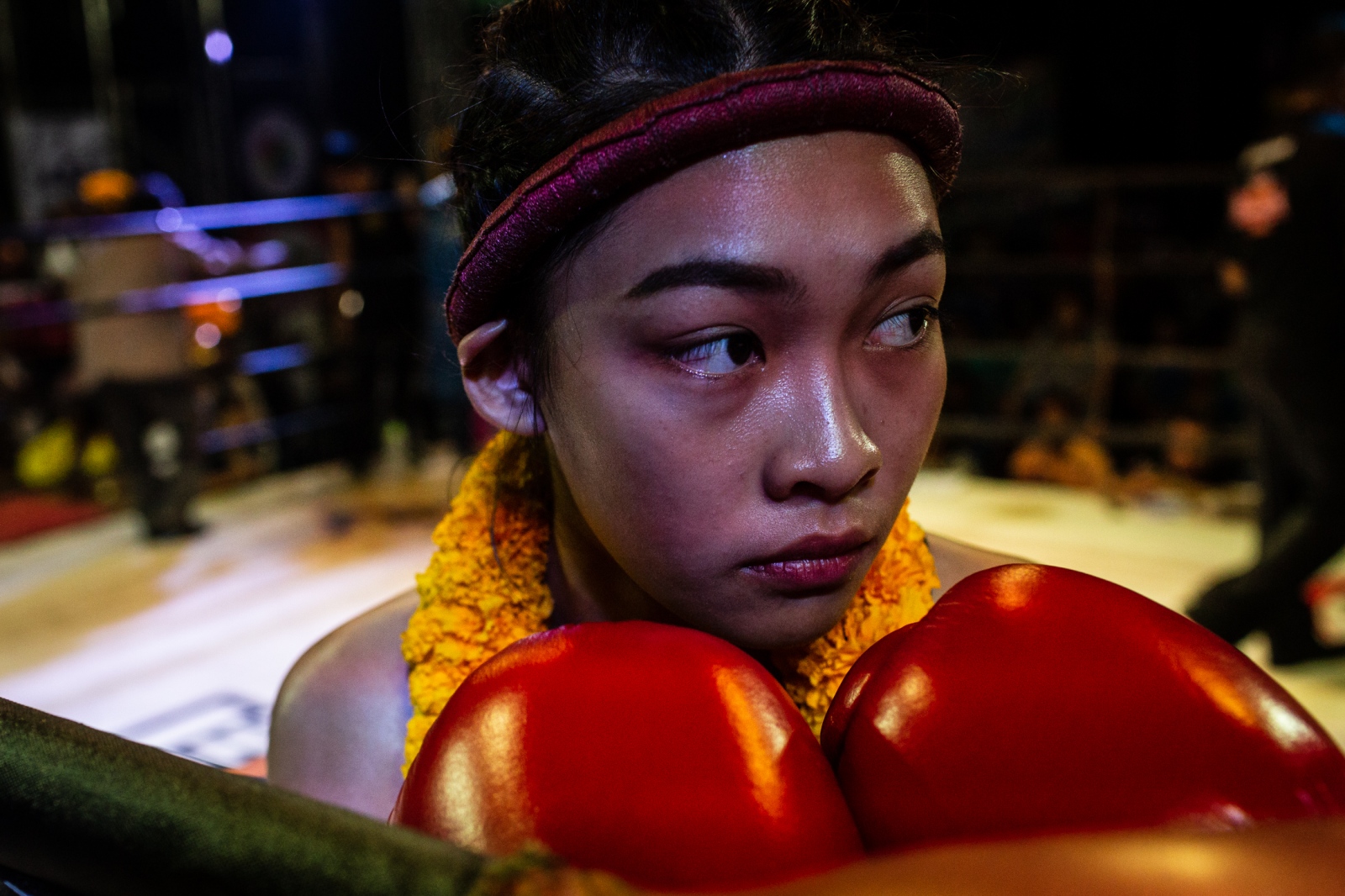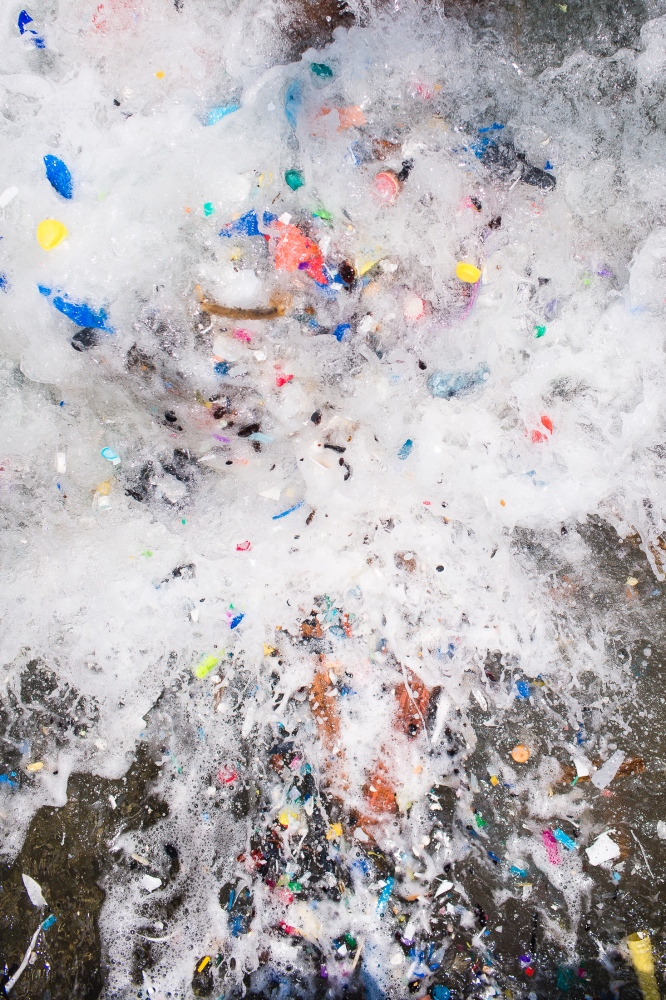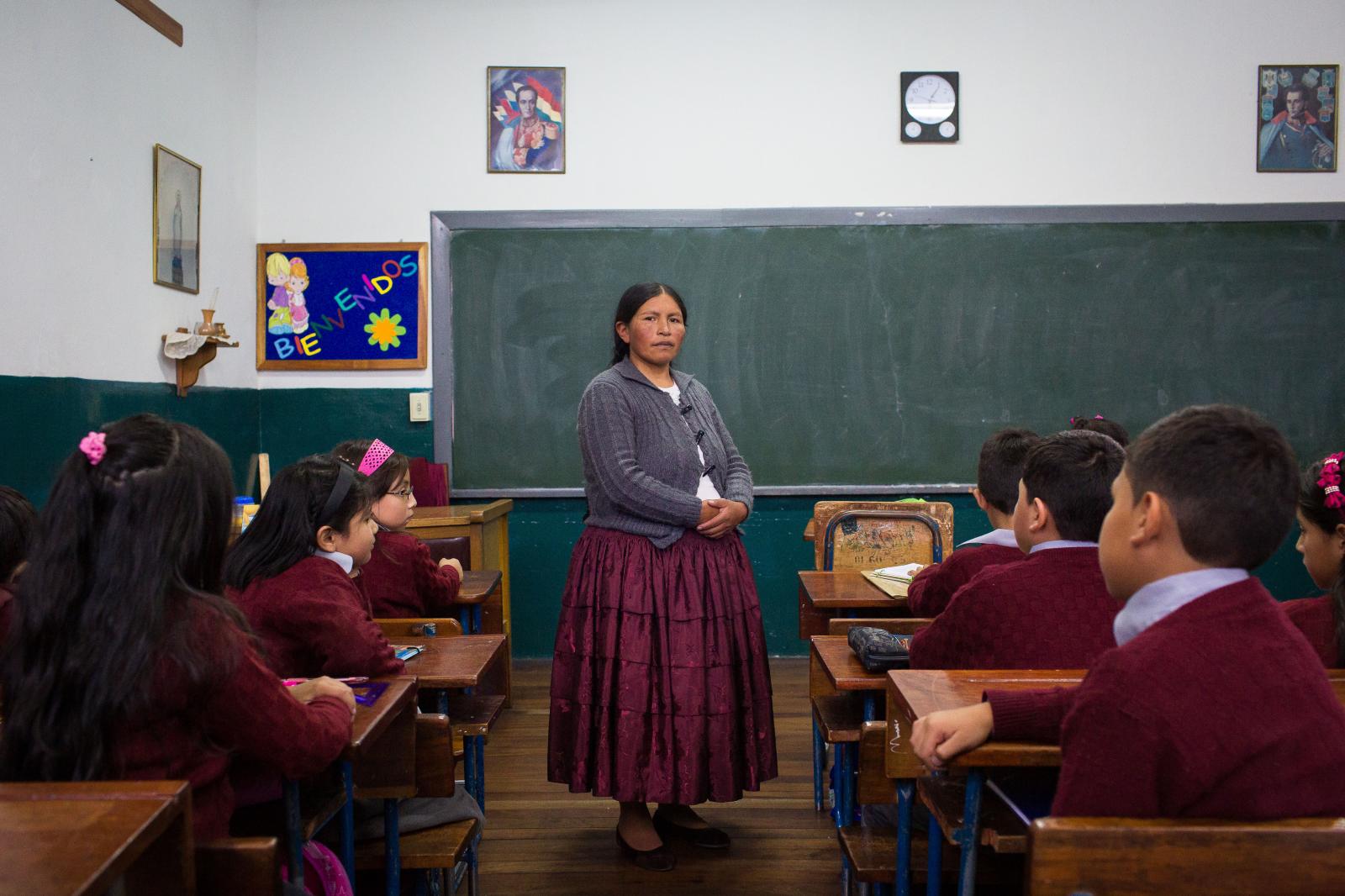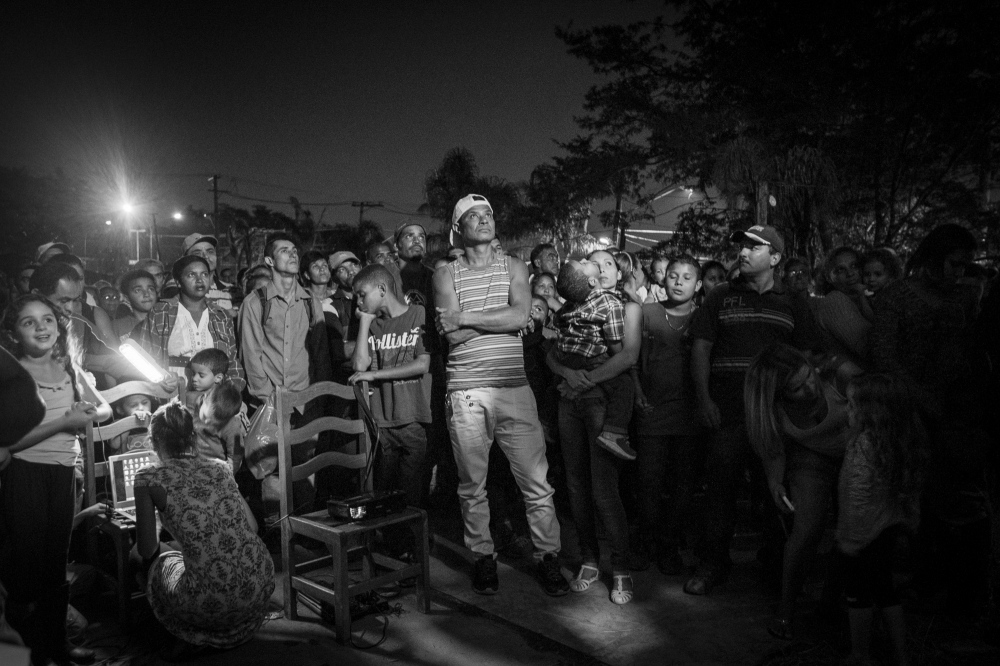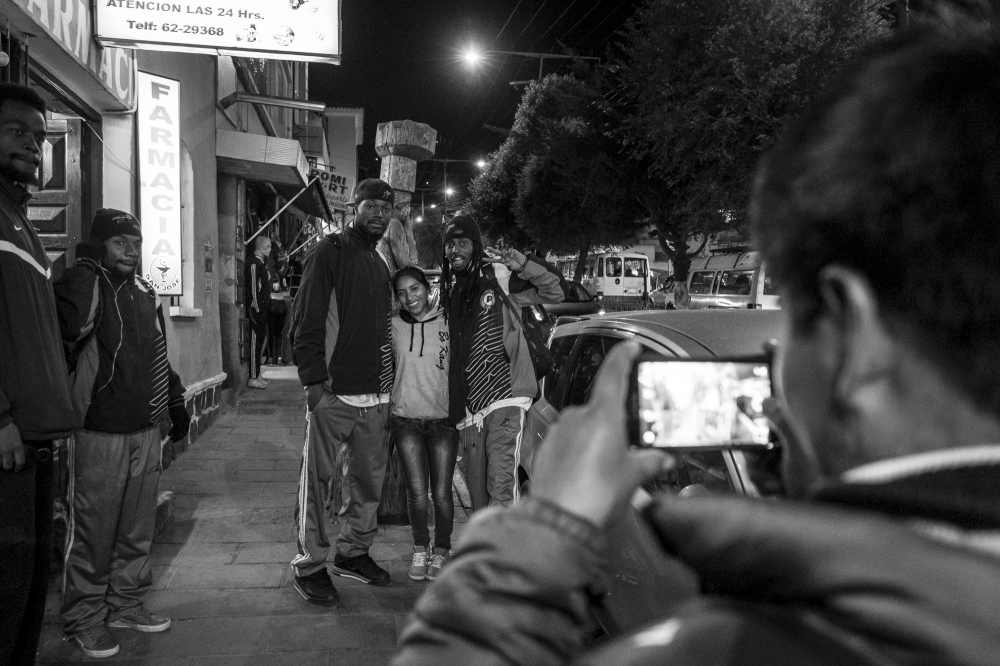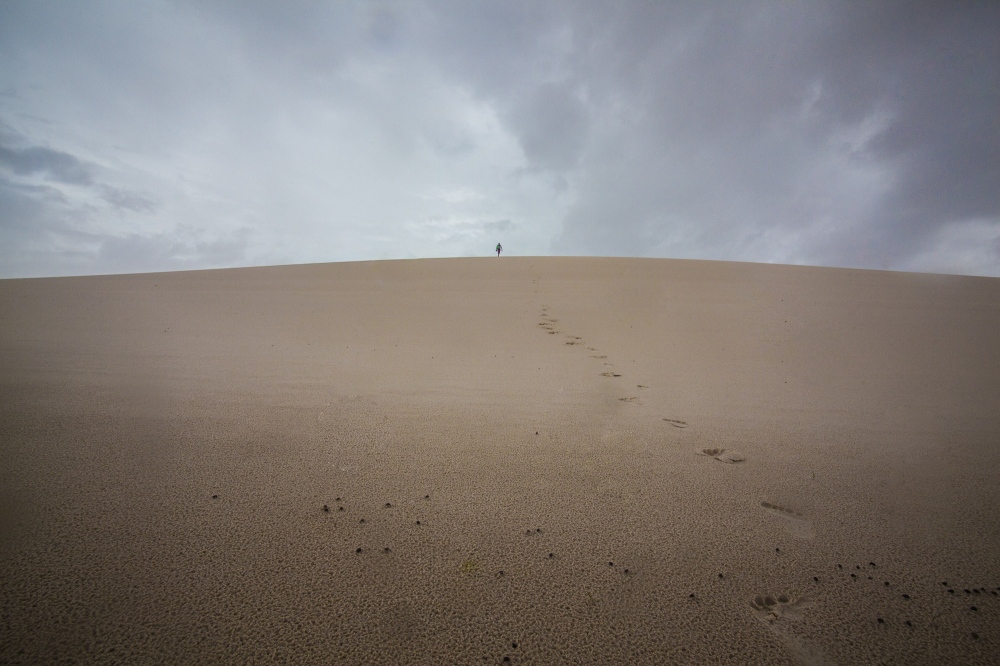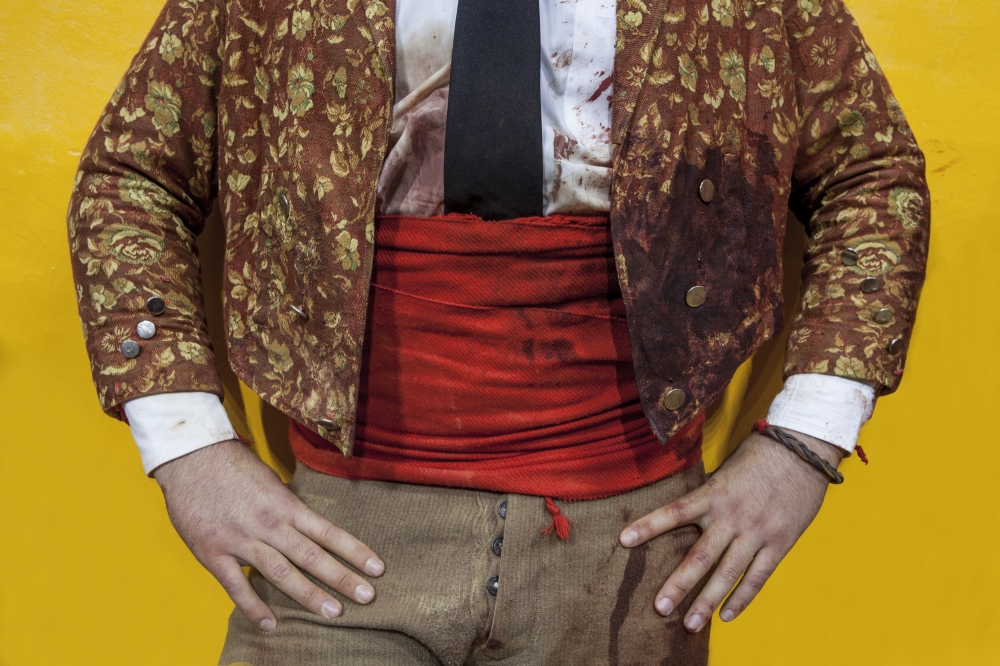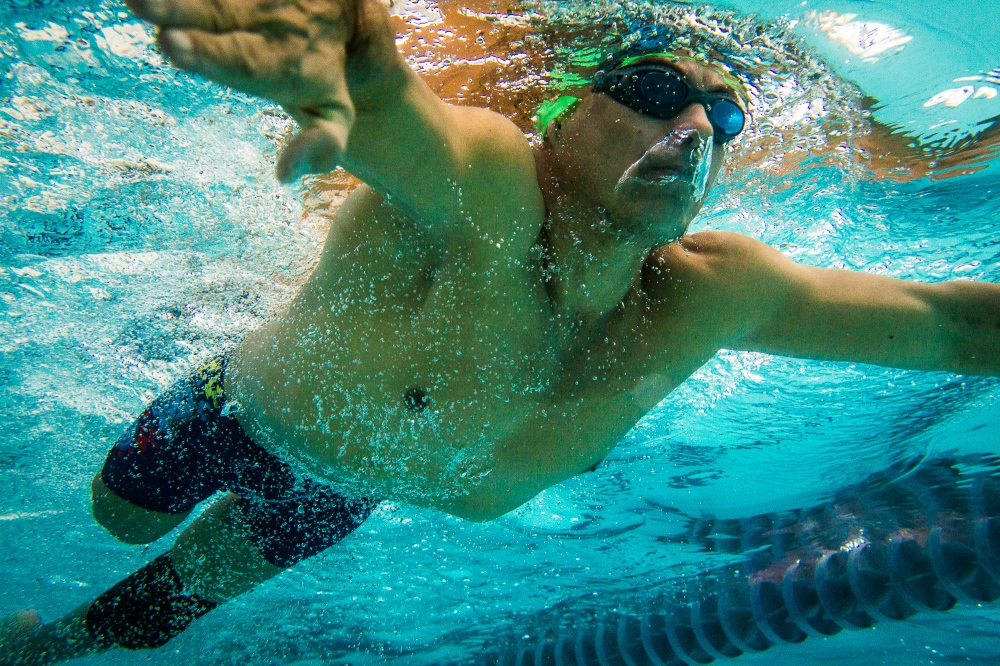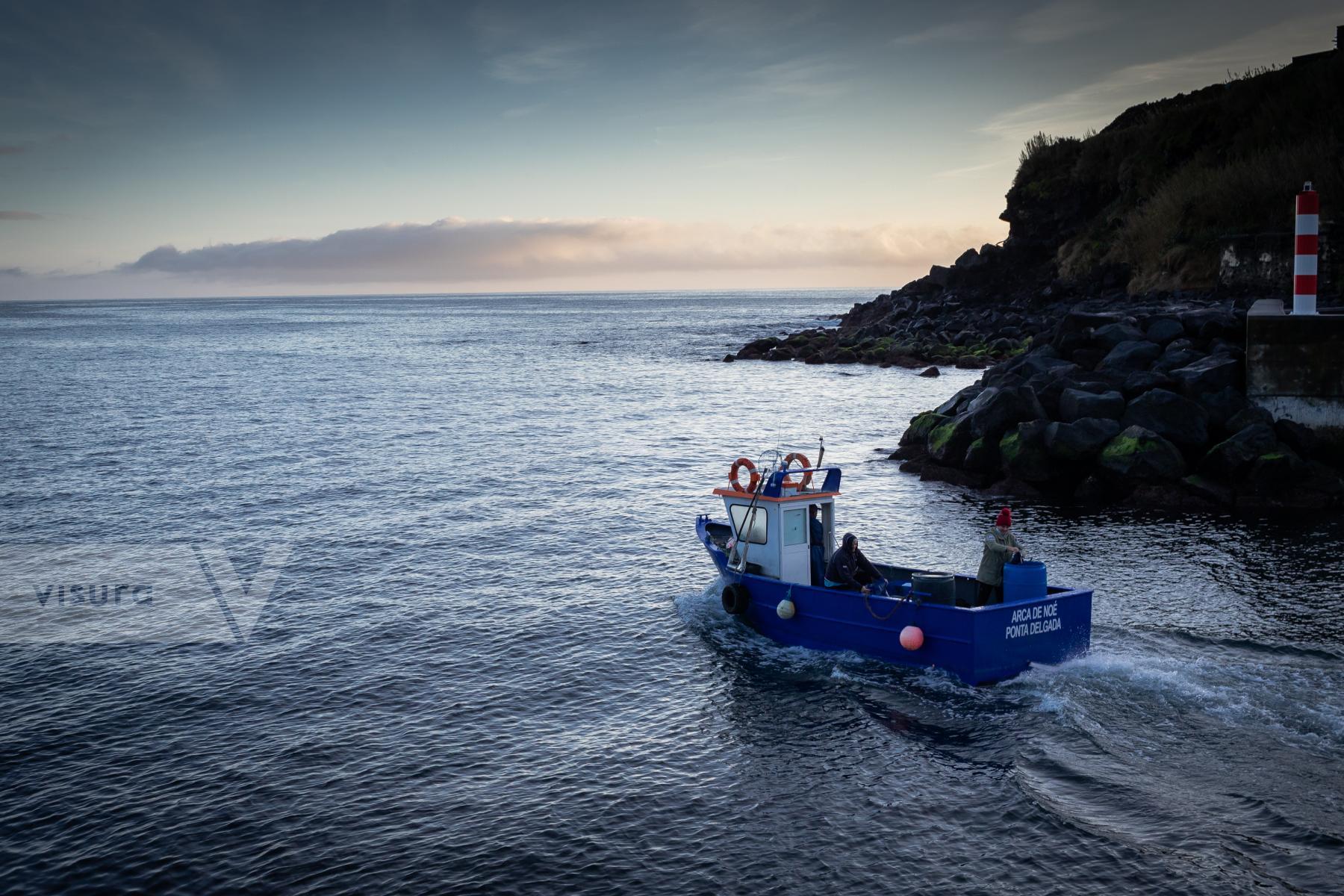
Lídia and Sara leave with their father on the vessel Arca de Noé for another morning of fishing from Porto Formoso, on the island of S. Miguel. The presence of women at sea is almost non-existent, and when it happens they always work on family boats. On unfamiliar boats, women are usually not welcome, because of their gender, the assumption that they don’t have the force and stamina to endure such work and also because is not socially accepted, as neither husbands want their wives surrounded by men from the sea, nor fishermen's wives want other women on board.
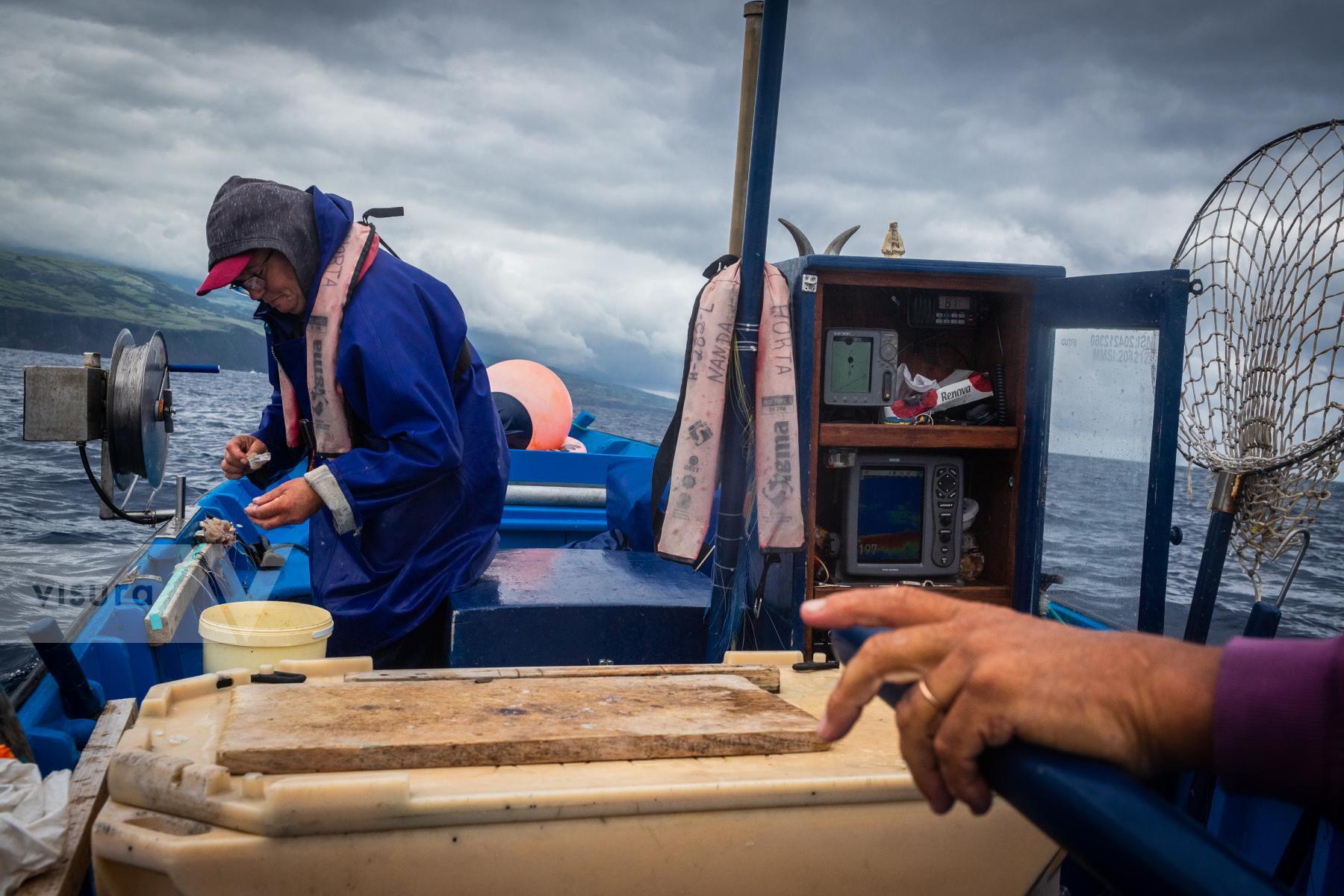
Fátima prepares the bait at the beginning of another fishing session on the island of Faial. Fátima started working at sea to help her husband, as it is increasingly difficult to find the labour in this area. The lack of fish in the seas and the low income associated with fishing creates a shortage of people to work on the fishing vessels. Initially, Fátima’s four children reacted badly to her professional choice, but she guarantees that both men and women have the ability to fish, stressing that it's all a matter of initiative and willingness to break the image of fragility associated with women.
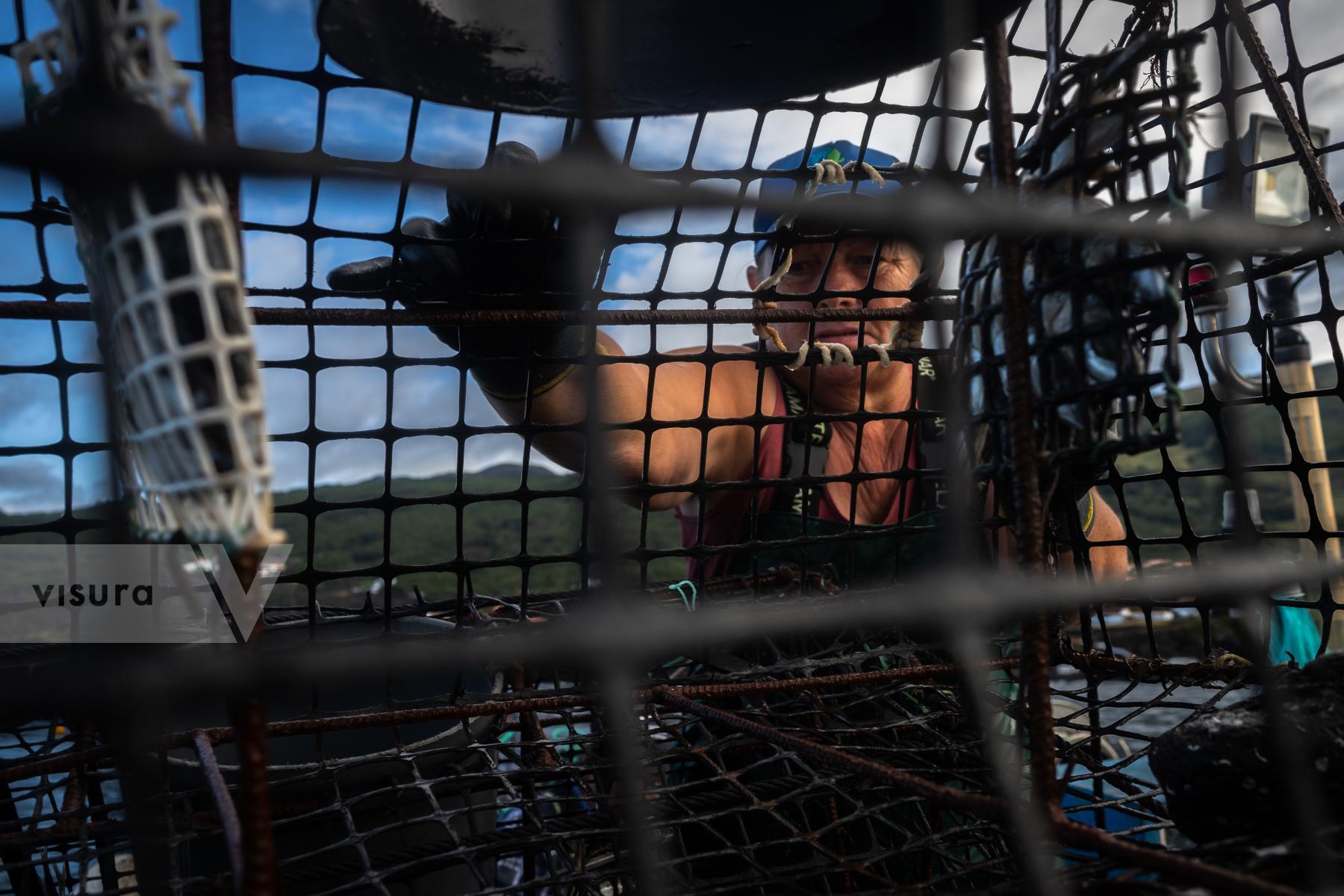
Eugénia organizes the heavy coffers during lobster fishing on the island of Pico. Like most women working in the fishing industry, Eugénia only worked on land preparing the coffers that her husband took to the sea. Since 2006, to balance the family budget, she decided to join her husband at sea. She confesses that it's hard, especially when she has to reconcile with housework, but nowadays she doesn't see herself having another profession.

Sisters Lídia and Sara pull the nets during a trip to the sea on the island of S. Miguel. Daughters of fishermen continued the family legacy by accompanying their father after their mother had left the sea, but still continuing to provide support on land, as most of the women who work in this industry. Due to the lower income associated with fishing Sara stopped working on the boat, which made the family hire fishermen to replace her, but Lídia intends to continue fishing. She already has her fishing license and hopes to be the captain of the boat once her father retires.
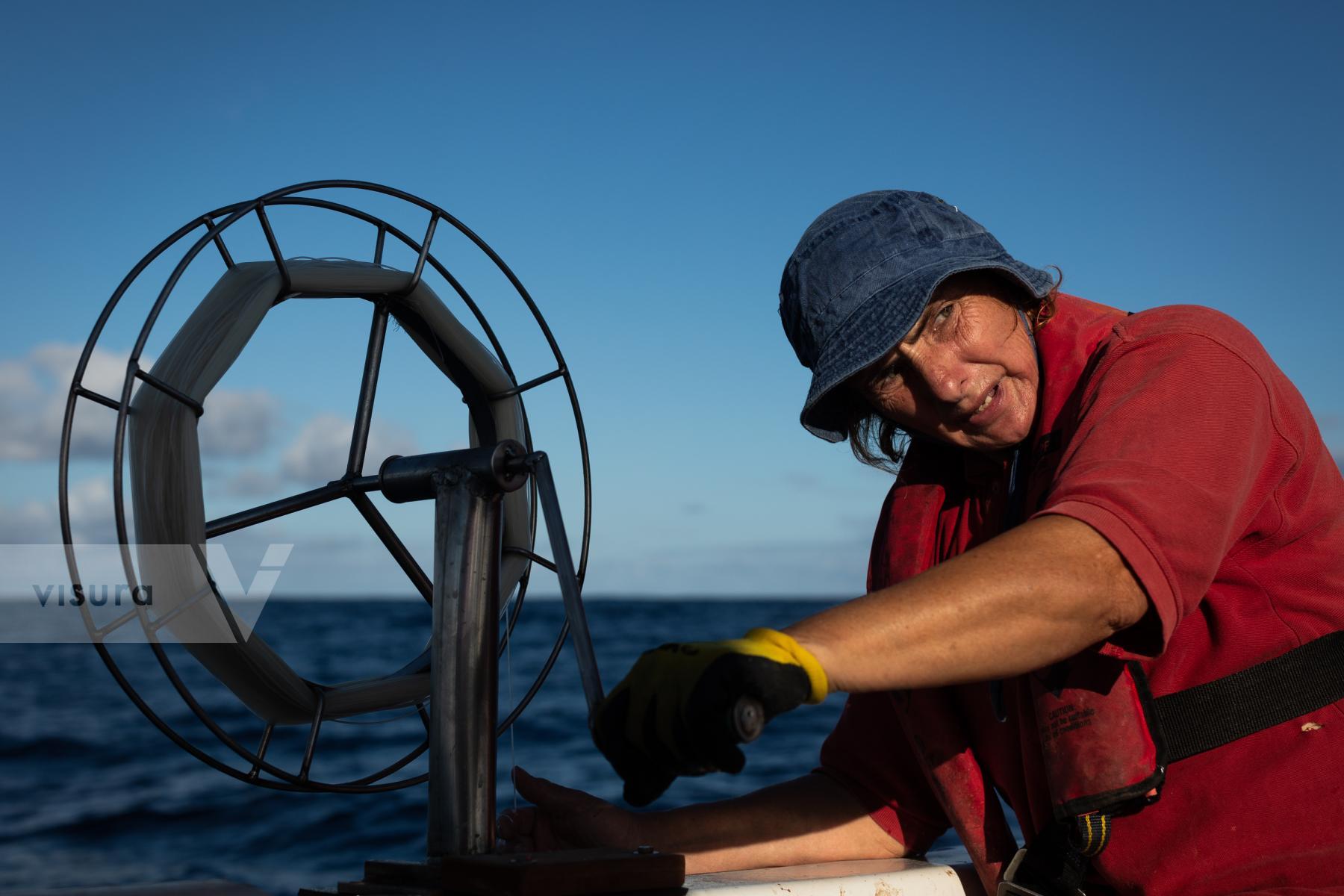
Ilídia pulls the line with the winch during another arduous fishing journey on the island of Graciosa. Like almost all fisherwomen, Ilídia started with her husband 30 years ago. After the divorce, she kept the boat and started fishing alone, which at the beginning was seen with suspicion by many fishermen. They used to tell her that women didn’t belong at the sea, and had some equipment sabotaged. For some time she still fished with her eldest daughter, but after becoming a mother she had to leave the sea. Motherhood, domestic work, social and economic pressure are the main reasons for the abandonment of women in this activity.
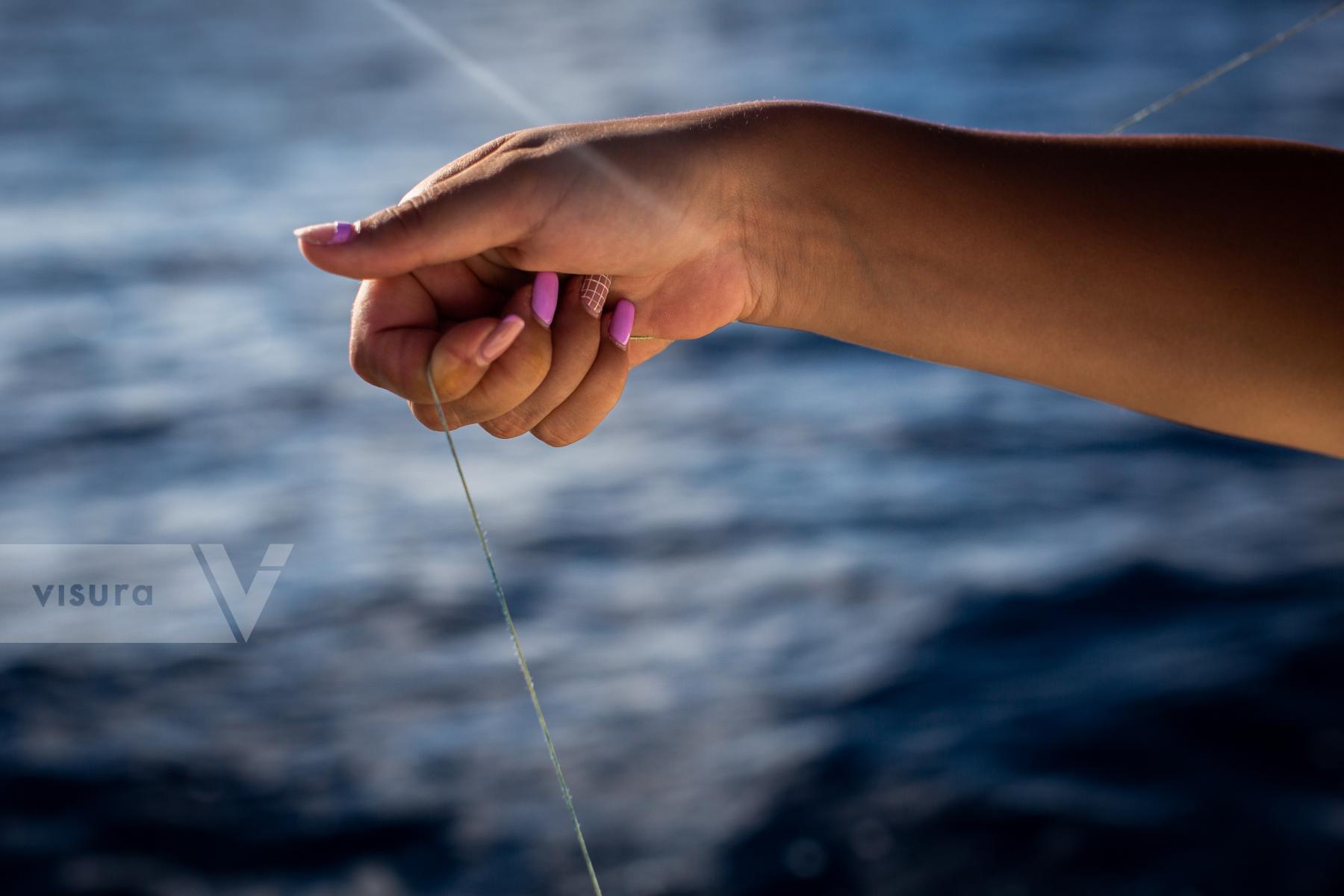
A fisherwoman's cared hands hold the line while fishing. Being a woman and showing the feminine side does not mean being less able to work in an art that is almost always considered exclusive to men. The number of fishing personnel has been steadily dropping in the last years, due to the lack of fish in the sea and the disappearance of artisanal and family-owned boats. From the beginning of the 2000s until now most women left the sea. Only four women are still working, which will probably be the last fisherwomen in the Azores.
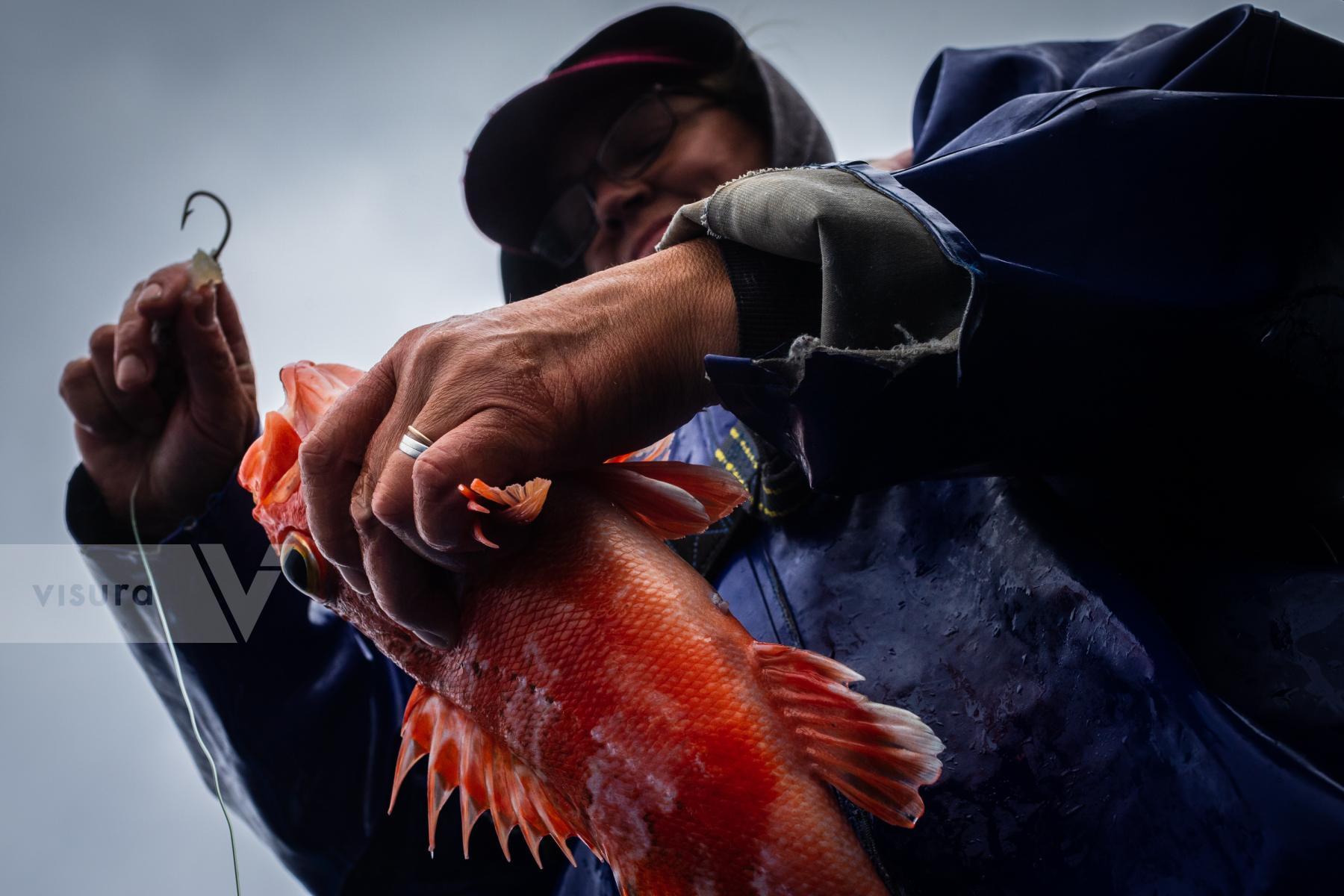
Fátima removes the hook from a Boca Negra during the fishing journey on the island of Faial. Artisanal fishing is increasingly difficult due to the lack of support and the reduction of fish in the sea, which creates economic problems for those who live from it. Despite these difficulties, having already been shipwrecked and having been adrift, Fátima has been out to sea daily for 25 years.
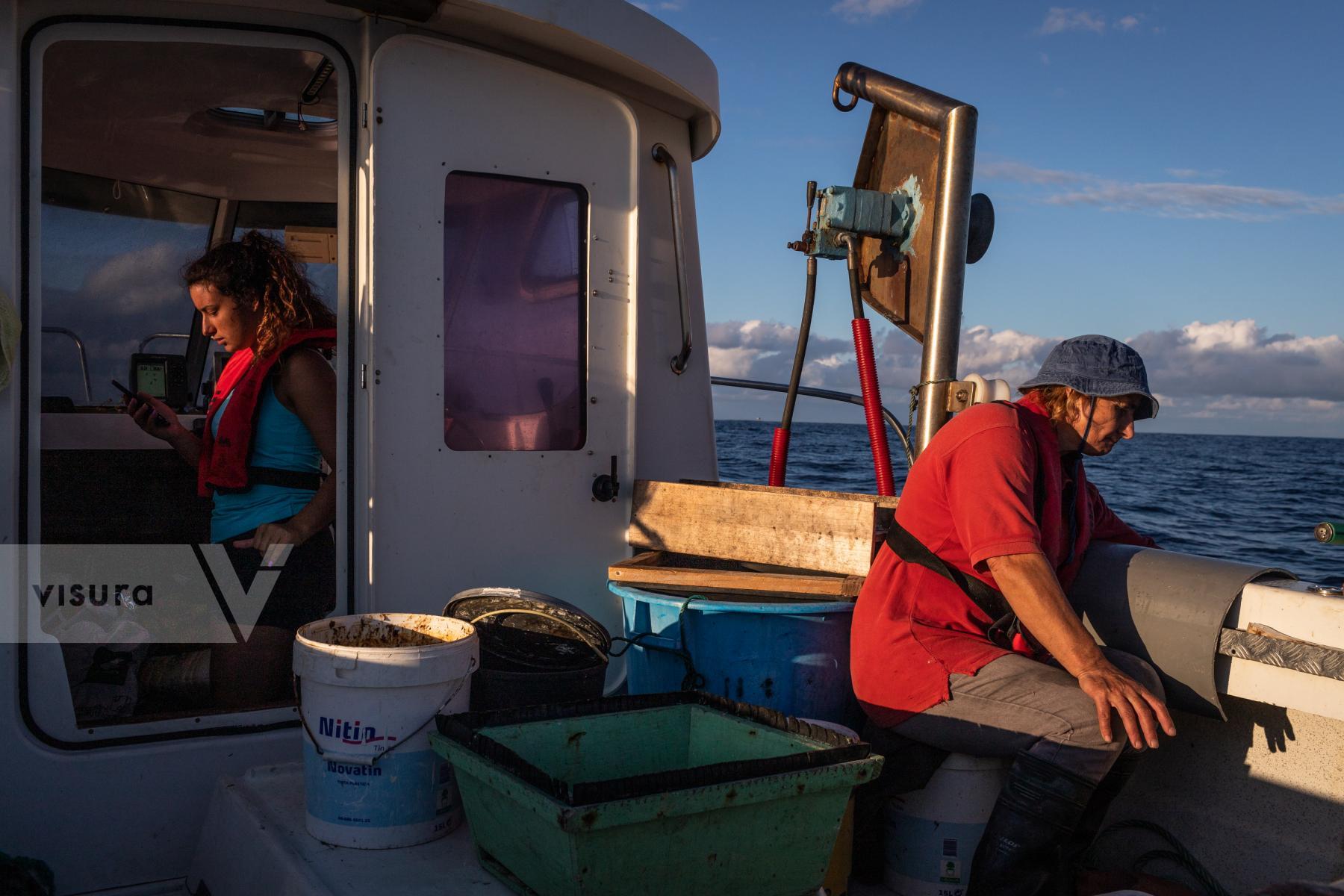
Ilídia waits for the fish to take the bait while Beatriz (inside the cabin) plays with her cell phone. Ilídia tries to pass on the testimony to her granddaughter, who despite liking the sea, does not see herself making this life. The number of fisherwomen has drastically decreased in recent years. For new generations, the emergence of other opportunities makes life at sea an unattractive profession.

Sara rests at the end of another fishing session on the island of S. Miguel. However, she left the profession after finding a lighter job that guarantees a fixed monthly salary. Difficulty in reconciling family life with fishing, gender segregation and financial instability are some of the many reasons why women abandon the sea.

At the end of another fishing session, Eugénia pulls the boat “Sereia do Mar” into the port of S. Caetano, on the island of Pico. Despite the difficulty of working at sea due to stereotypes and socially imposed barriers in relation to gender, these women show that they are just as capable of doing this work as men.

Lídia and Sara separate the fish that will go into auction to be sold, on the island of S. Miguel. The increase of large boats and the reduction of fish in the sea means that artisanal fishing, carried out by small and family own boats, becomes financially unsustainable.

Lidia fixes the fishing nets with her mother, Zilda, in their backyard on the island of S. Miguel, Azores. The role of women in the fishing industry in the Azores is mainly limited to the support they provide on land, whether in the preparation of troughs, safes and nets or in the logistical work of cleaning and selling fish. Zilda keeps working on the land after abandoning the sea due to age and illness, while Lidia still works both on land and on the sea.

Fátima takes advantage of an afternoon of stormy sea to prepare the fishing gear. The role of women in the fishing industry in the Azores is mainly limited to the support they provide on land, whether in the preparation of troughs, safes and nets or in the logistical work of cleaning and selling fish. Despite going to the sea, Fátima, like all the other fisherwomen, still fulfils this function.
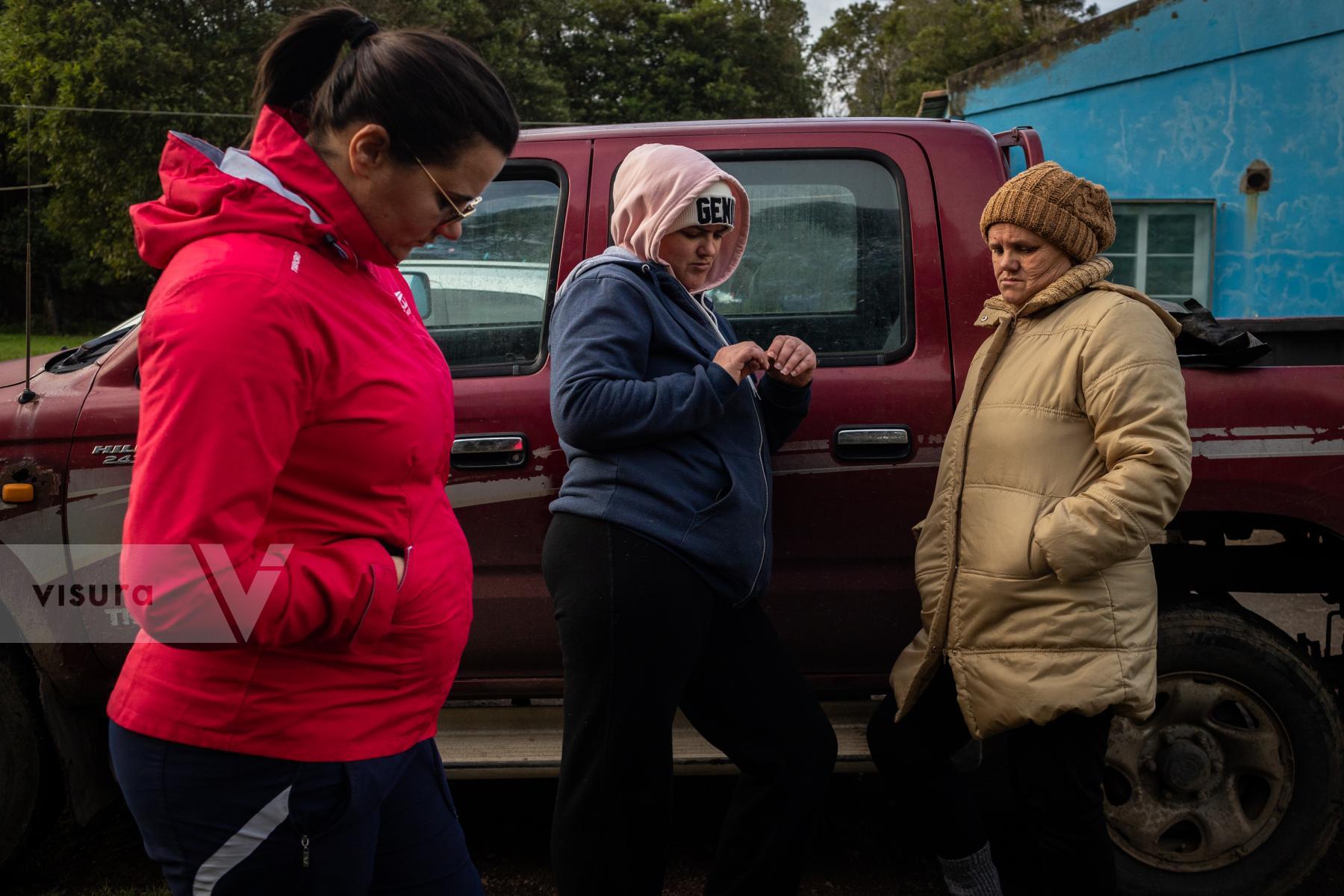
Sara, Lídia and their mother, Zilda Silva – who in the past also went to sea, rest for a moment after a long day at work. The workload is very intense, which translates into long working hours, starting almost always before the sun rises and ending many times after it has set. From these three women, only Lídia is a fisherwoman now, since her mother retired due to her age and Sara quit after finding a job that offers a steady monthly income. They worked on the same familiar boat, since women are usually not welcome, because of their gender, the assumption that they don’t have the force and stamina to endure such.
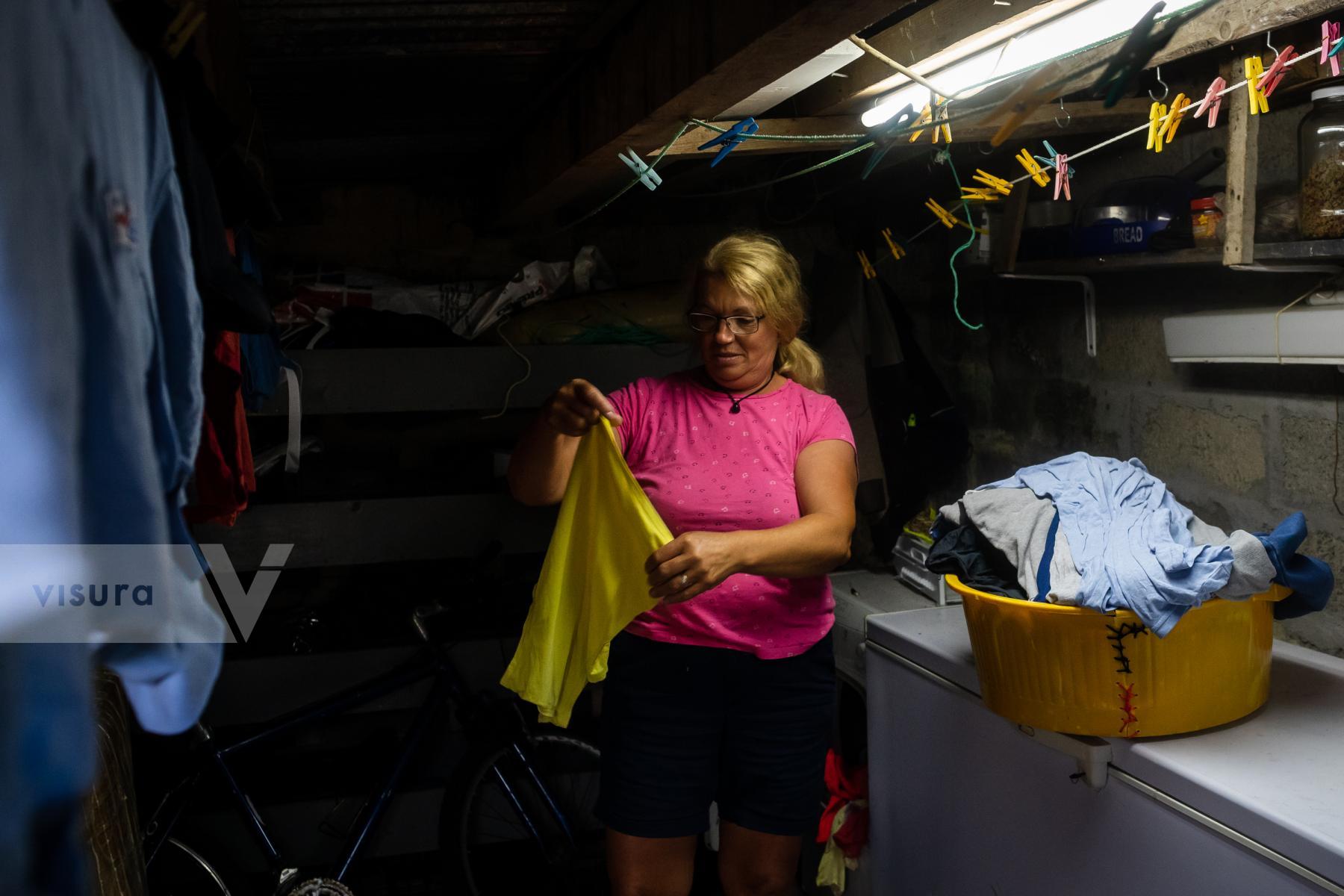
Fátima takes advantage of the little free time she has to take care of the family's clothes. In addition to fishing and numerous other related tasks, when the fisherwomen get home they have to deal with the housework for which they are normally responsible. Unlike fishermen, fisherwomen usually combine their homework with the work at sea.

Before leaving for another fishing session, Lídia plays with the dogs, while her father has breakfast indoors. In addition to dedicating herself to fishing, Lídia's second professional activity is training and caring for pets, in order to supplement her monthly income. The vanish of familiar boats and fish makes it harder, for men but even more for women to live exclusive from fishing.
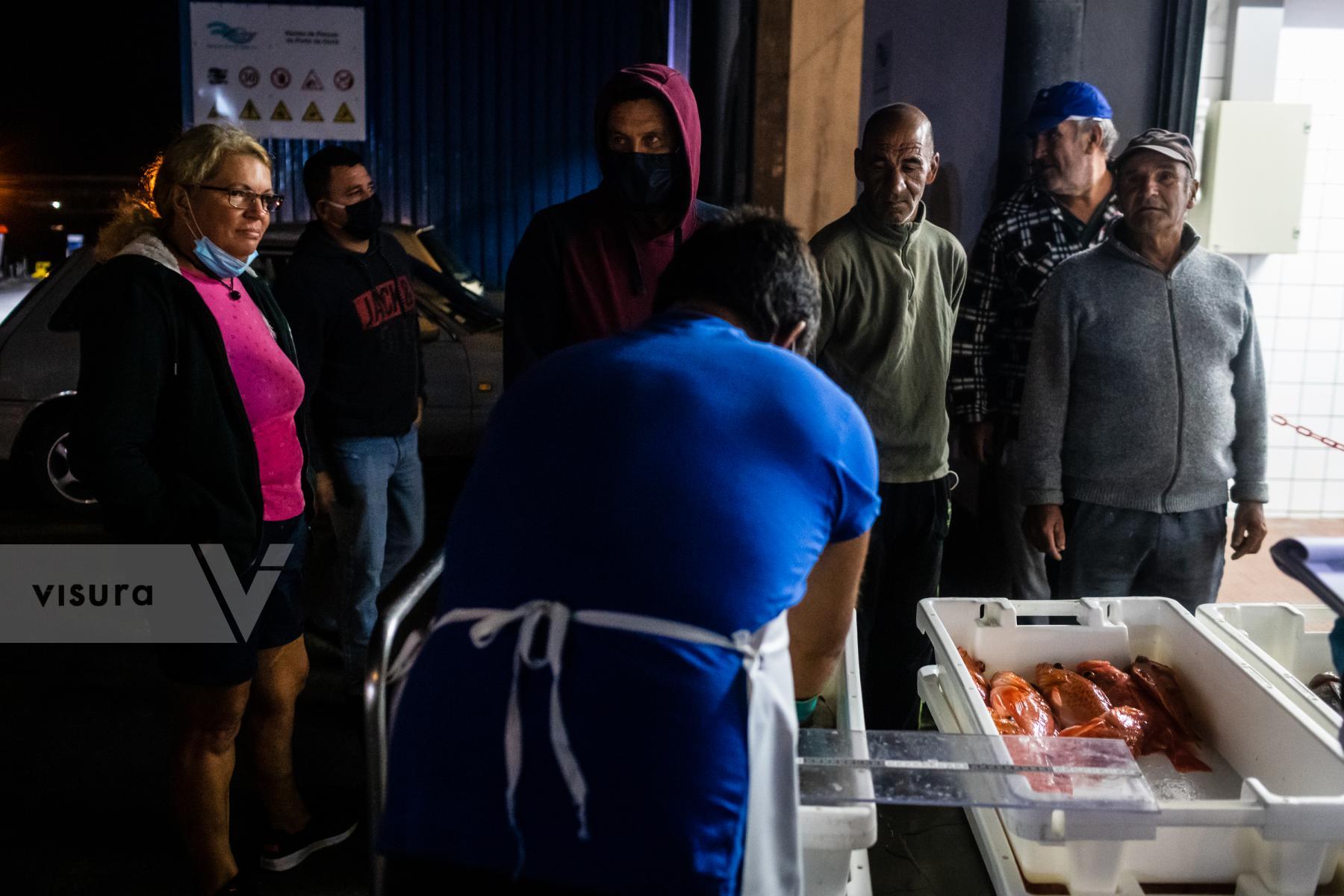
During the early hours of the day, Fátima, surrounded by fishermen, follows the auction of the fish that she caught the previous night. She is the only fisherwoman on Faial island and one of the four women going to the sea in the entire archipelago. Due to the increase of larger fishing vessels and the lack of fish in the sea, the life of small fishing people is becoming much harder.
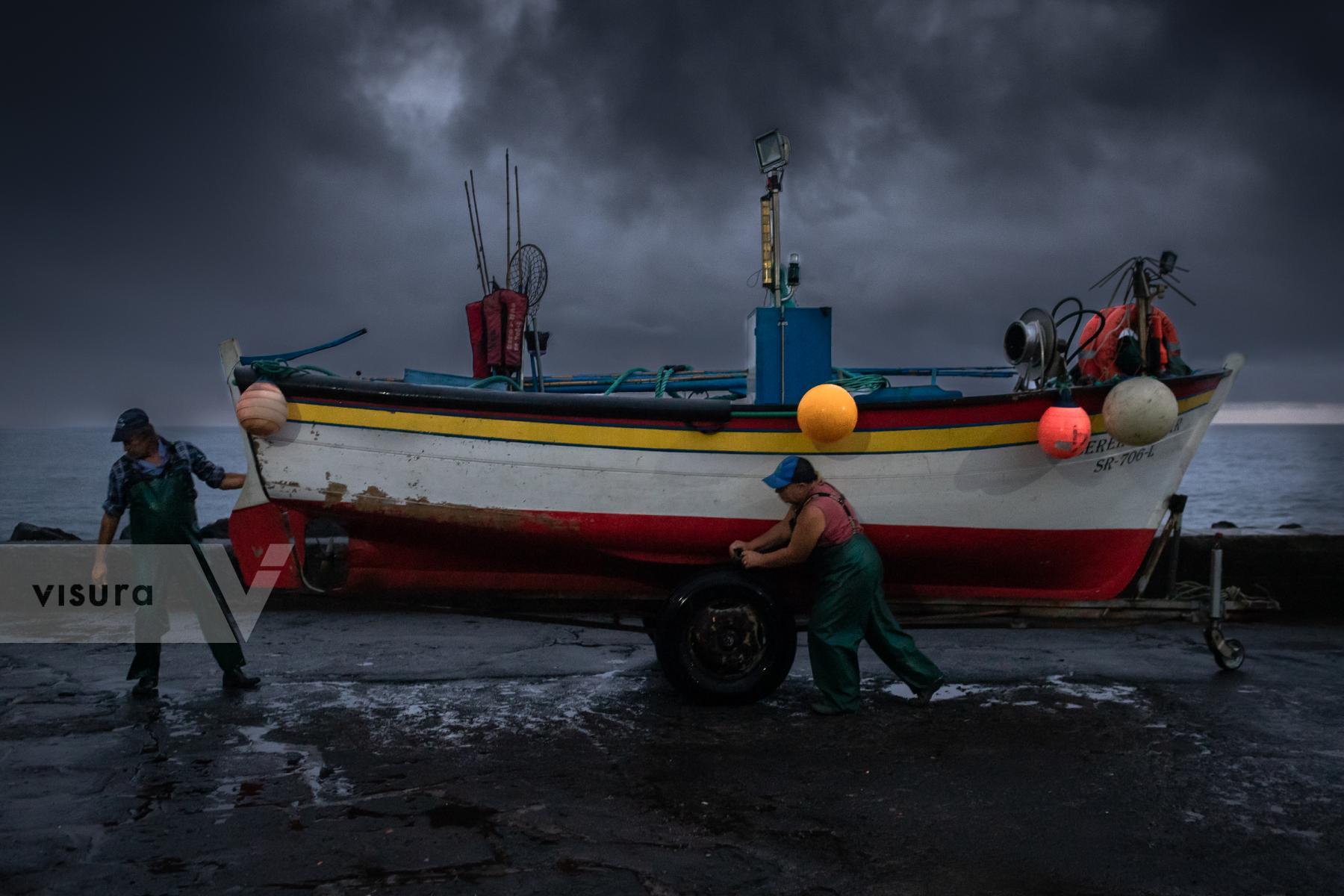
Eugénia and her husband, Ermegildo, push the boat “Sereia do Mar” before starting another lobster fishing journey in the port of S. Caetano, Pico Island. The presence of women at sea is almost non-existent, and when it happens they tend to fish in family boats. Entering unfamiliar boats is not socially accepted, as neither husbands want their wives surrounded by men from the sea, nor fishermen's wives want other women on board.





















